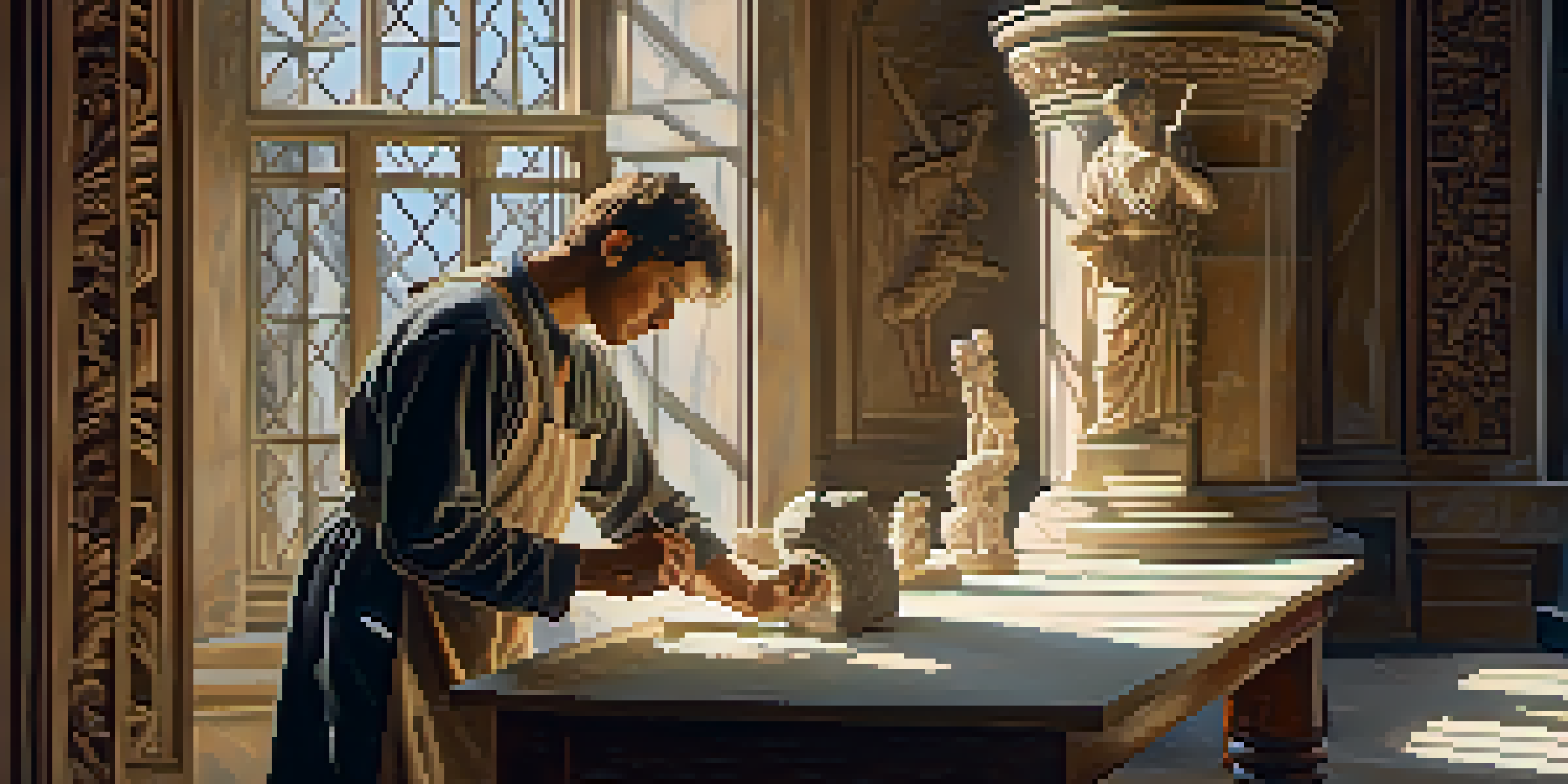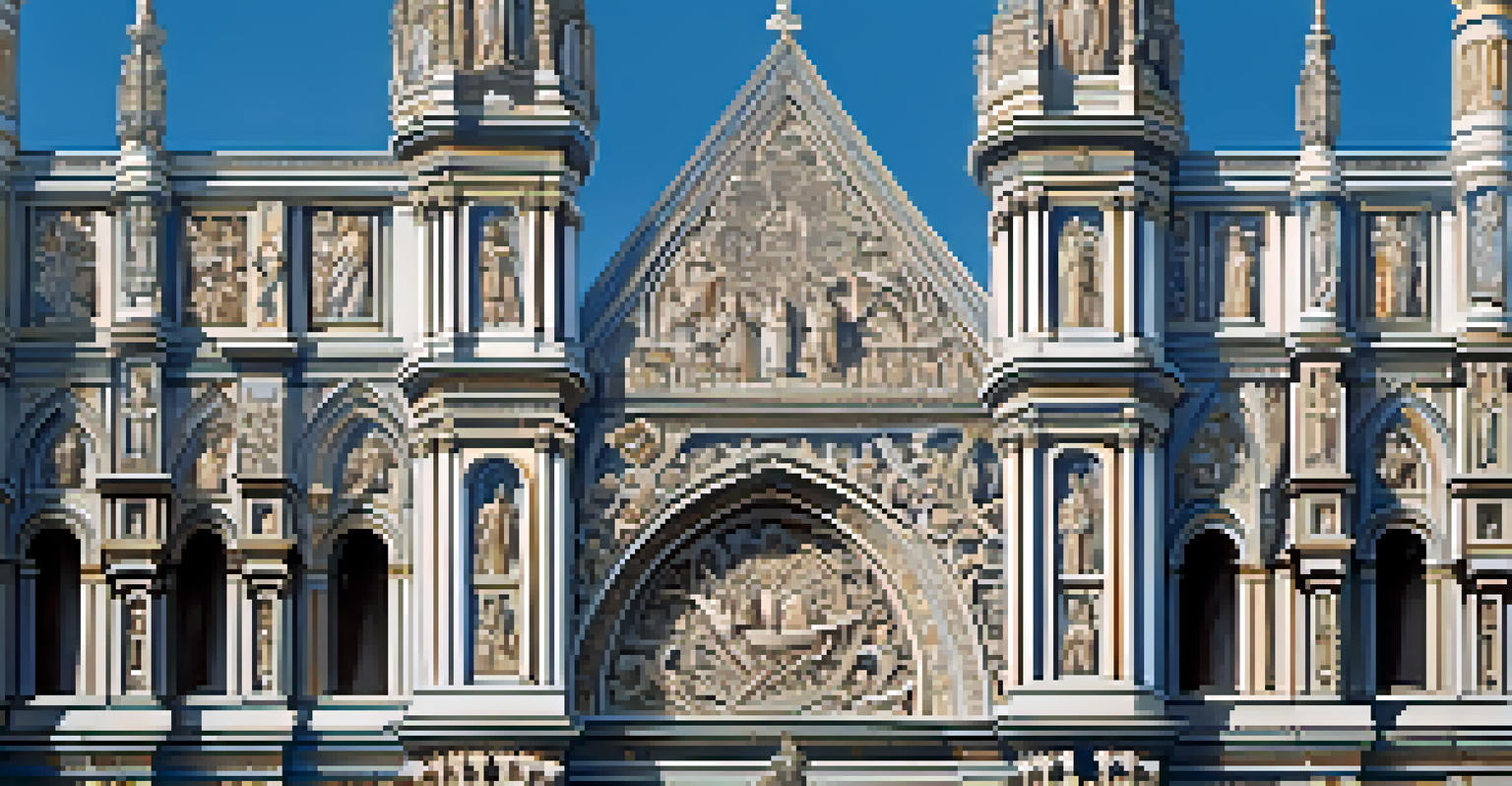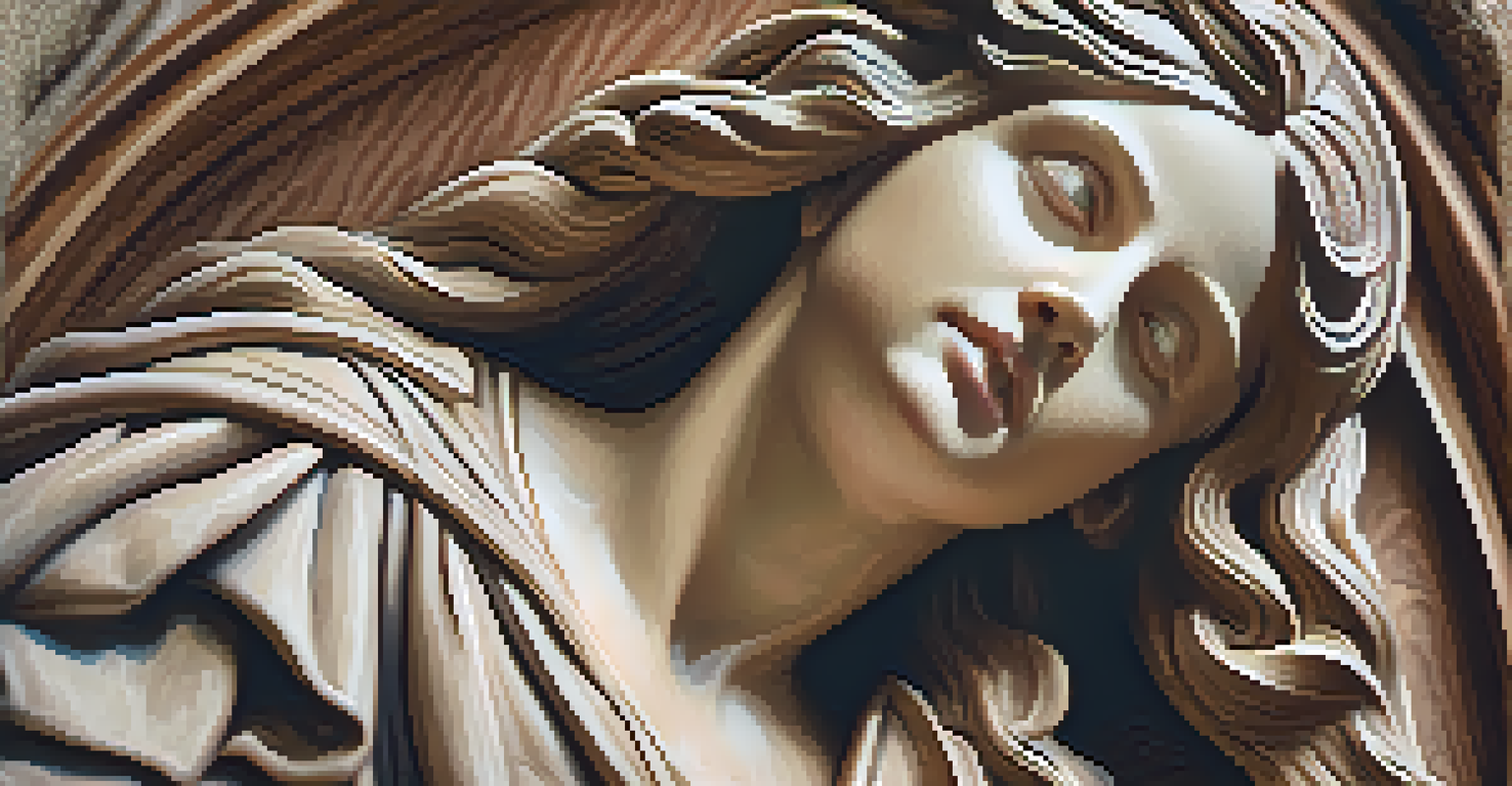The Evolution of Carving Styles in European Renaissance Art

Understanding the Roots of Renaissance Carving Styles
The Renaissance, spanning from the 14th to the 17th century, marked a profound transformation in European art. Artists sought inspiration from classical antiquity, moving away from medieval conventions. This shift laid the groundwork for innovative carving techniques that emphasized realism and human emotion.
Art is the most beautiful of all lies.
During this period, sculptors began to focus on proportion and anatomy, striving to create lifelike representations. Influential figures like Donatello broke new ground with his detailed and expressive works. By returning to ancient Greek and Roman ideals, artists breathed new life into their carvings.
This emphasis on naturalism not only changed the way figures were depicted but also influenced the materials and tools used. The introduction of new carving techniques allowed for greater detail and complexity, setting the stage for the masterpieces that would follow.
Key Characteristics of Early Renaissance Carving
Early Renaissance carving, particularly in Italy, showcased a distinct shift towards realism. Artists like Lorenzo Ghiberti used shallow relief techniques to create depth, captivating viewers with their intricate designs. These early works often featured biblical themes, reflecting the era's spiritual focus.

One notable example is Ghiberti's 'Gates of Paradise,' which exemplifies the use of perspective and human emotion. The figures are carefully rendered, drawing viewers into the narrative. This combination of technique and storytelling became a hallmark of early Renaissance art.
Renaissance Carving Revolutionized Art
The Renaissance marked a shift towards realism and emotional expression in carving, influenced by classical antiquity.
As artists experimented with their styles, they began to incorporate more dynamic poses and expressions. This not only enhanced the visual appeal but also allowed for a deeper emotional connection with the audience, making the art more relatable and engaging.
The Influence of Northern European Styles
While Italian artists led the way in carving innovation, Northern Europe brought its own unique influences to the table. Artists such as Jan van Eyck and Albrecht Dürer introduced intricate detail and an emphasis on texture in their work. This added a different dimension to carving styles, merging realism with decorative elements.
Every artist dips his brush in his own soul, and paints his own nature into his pictures.
The use of wood and stone in Northern Europe allowed for a distinct approach to carving, often featuring complex iconography. Dürer's woodcuts, for instance, showcased detailed line work that combined artistry with mass production. This democratized access to art, allowing a broader audience to experience these detailed carvings.
As these Northern styles mingled with Italian techniques, a rich tapestry of artistic expression emerged. The blending of these influences is evident in the works of later artists who sought to balance detail with emotional depth, leading to even more sophisticated carving styles.
The Rise of Mannerism in Carving
As the Renaissance progressed, a new style known as Mannerism began to emerge. Mannerist artists, such as Michelangelo, pushed the boundaries of proportion and perspective, often favoring elongated forms and exaggerated poses. This shift marked a departure from the harmony and balance typical of earlier Renaissance art.
In carving, Mannerism allowed for more expressive and dramatic figures that conveyed heightened emotion. Michelangelo's sculptures, like 'David,' exemplify this evolution with their intense physicality and complex compositions. The focus shifted from naturalism to an exploration of the artist's individual vision.
Mannerism Redefined Artistic Norms
Mannerism introduced elongated forms and exaggerated poses, moving away from the balance of earlier Renaissance art.
This innovative approach to carving led to a variety of interpretations and styles, as artists experimented with techniques that challenged traditional norms. The emphasis on personal expression paved the way for future artistic movements, creating a lasting impact on the evolution of art.
The Role of Sculpture in Architecture
During the Renaissance, carving was not limited to standalone sculptures; it played a crucial role in architecture as well. Architectural carvings adorned cathedrals, palaces, and public buildings, serving both decorative and structural purposes. This integration of carving into architecture showcased the era's commitment to artistic unity.
One prime example is the intricate reliefs on the facades of churches, which often depicted biblical scenes or saints. This not only beautified the buildings but also communicated religious narratives to the public. Sculptors like Gian Lorenzo Bernini elevated this practice, blending sculpture and architecture seamlessly.
As artists began to collaborate with architects, the boundaries between different art forms blurred. The result was a dynamic interplay of carving and architecture that defined the period, transforming public spaces into immersive artistic experiences.
Technological Advances and Their Impact
The Renaissance was a time of significant technological advancement, and this extended to the tools and materials used in carving. Innovations such as the use of chisels and hammers specifically designed for intricate work allowed artists to achieve greater detail and precision. This technological progress played a vital role in the evolution of carving styles.
Additionally, the introduction of perspective and foreshortening techniques provided new ways to represent three-dimensional forms on two-dimensional surfaces. Artists could create more dynamic compositions, enhancing the overall impact of their carvings. This shift not only transformed individual works but also influenced broader artistic trends.
Carving Enhanced Architectural Unity
Sculptural elements integrated into architecture showcased the era's commitment to artistic unity and storytelling.
As artists embraced these advancements, the quality and complexity of carvings improved dramatically. This evolution opened up new possibilities for creative expression, setting the stage for the Baroque period and beyond, where carving would continue to develop and flourish.
The Legacy of Renaissance Carving Styles
The carving styles that emerged during the Renaissance left an indelible mark on the art world, influencing generations of artists. The focus on realism, emotion, and innovative techniques became foundational principles for future movements, including Baroque and Neoclassicism. This legacy continues to resonate in contemporary art as well.
Many modern sculptors draw inspiration from the works of Renaissance masters, adapting their techniques to create new forms of expression. The emphasis on detail and human emotion remains relevant, as artists strive to connect with audiences on a deeper level. This ongoing dialogue between past and present highlights the timelessness of Renaissance carving styles.

Ultimately, the evolution of carving during the Renaissance represents a significant chapter in the history of art. It reflects not only the changing aesthetics of the time but also the broader cultural shifts that shaped Europe, making it a fascinating subject for art enthusiasts and historians alike.